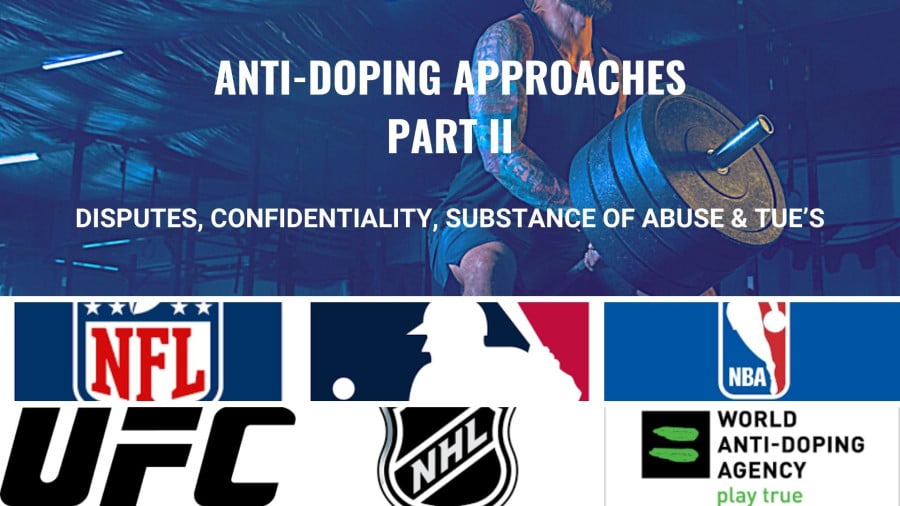Comparing Approaches to Anti-Doping: WADA, MLB, NBA, NHL, NFL & UFC: Part 2

The purpose of this series of articles is to review and compare the approach to key aspects of anti-doping policy taken by the World Anti-Doping Agency (WADA) and the World Anti-Doping Code (the WADA Code), the National Football League (NFL), National Basketball Association (NBA), Major League Baseball (MLB), National Hockey League (NHL) and Ultimate Fighting Championship (UFC). The first instalment of this article (available here) compared the following:
- Governance and drafting;
- Participation at the Olympics and Winter Olympics
- Testing; and
- Types of offence.
This second instalment will compare the approaches taken to anti-doping dispute resolution, confidentiality and publication of results and sanctions, substances of abuse, and therapeutic use exemptions (TUEs).
Part 3 (available here) will then consider the questions of sanctions, defences and additional consequences.
To continue reading or watching login or register here
Already a member? Sign in
Get access to all of the expert analysis and commentary at LawInSport including articles, webinars, conference videos and podcast transcripts. Find out more here.
- Tags: Anti-Doping | Anti-Doping Rule Violations (ADRV) | Court of Arbitration for Sport | Cycling | Dispute Resolution | Governance | Integrity | Investigations | MLB | NBA | NFL | NHL | Regulation | Therapeutic Use Exemptions (TUE) | UFC | USADA | WADA | World Anti-Doping Code
Related Articles
- The IAAF blood test data leak - was publishing the data lawful?
- Should doping in sport be criminalised? A review of Germany's new Anti-Doping Act
- What will the Rodchenkov Act mean for the fight against international doping in sport?
- 2021 WADA Code – Reduced Sanctions For Substances Of Abuse, Multiple Violations And Recreational Athletes
- Contamination cases: Is the ‘narrow corridor’ for athletes starting to widen? (the Shayna Jack first instance decision)




